This tutorial is a companion to the forehand pendulum backspin/sidespin serve – front view tutorial, but showing a side view instead. Rather than repeat much of the front view version, I’ll just be pointing out items that are relevant to the side view.
Ready Position

© Greg Letts
Points to look for:
- Note the forward lean of the body, with much of the weight on the left foot.
- The right foot is placed well back from the left foot, which is not essential but is quite common for players who played in the era when hidden serves were legal.
- The ball is held above the playing surface, and above the endline. Note that although the thumb is over the playing surface, this is still legal, since only the ball has to be behind the endline according to the rules of ping-pong.
Start Of Ball Toss
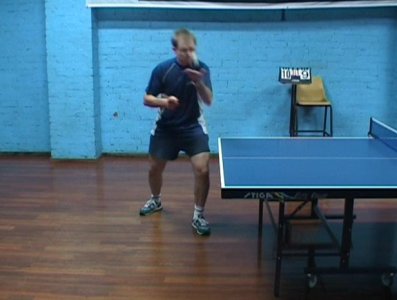
© Greg Letts
The ball has been thrown upward to begin the serve.
Points to look for:
- The toss is near vertical from this angle as well.
- The bat has risen due to the straightening of the body during the toss.
Top Of Ball Toss
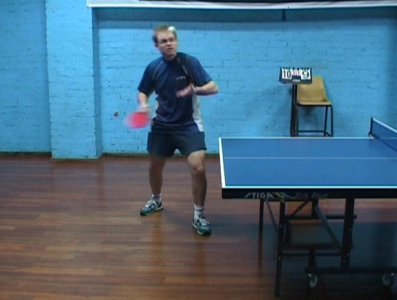
© Greg Letts
The ball is at the peak of its ascent.
Points to look for:
- The ball is moving slightly backwards, but well within the near-vertical guidelines.
- The bat is moving backwards in a pendulum-like motion, with the tip now pointing towards the floor but with the tip closer to the camera than the bat handle.
End Of Backswing
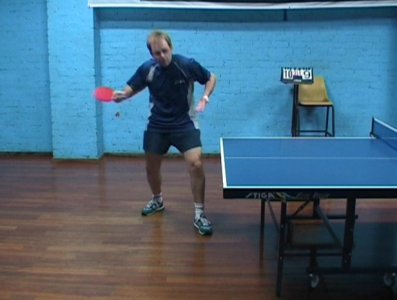
© Greg Letts
The ball is descending, and the player has finished his backswing.
Points to look for:
- The bat has moved backwards and upwards, due to the pendulum-like movement of the forearm.
- The cocking of the wrist can be clearly seen from this angle.
Pre-Contact With The Ball
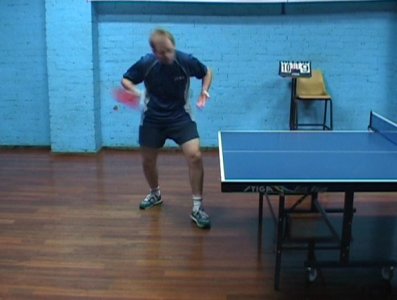
© Greg Letts
The player is just about to make contact with the ball.
Points to look for:
- The snapping of the wrist is shown by the heavy blurring of the bat, while the forearm is still in focus.
- It is clear from this angle that the player not looking at the contact of the ball.
Contact With The Ball
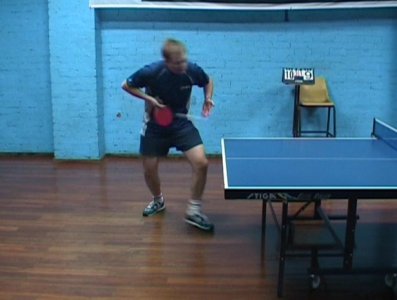
© Greg Letts
Contact has been made with the ball.
Points to look for:
- The bat has stopped moving forward soon after making contact. This is because the playing elbow has not moved during contact. Checking the position of the playing elbow against the previous two photographs will confirm this.
- The left foot has risen onto the toes, and will now swivel to the right of the player, as he brings the right side of his body across. Check the position of the left foot in the next photograph.
End Of Follow Through
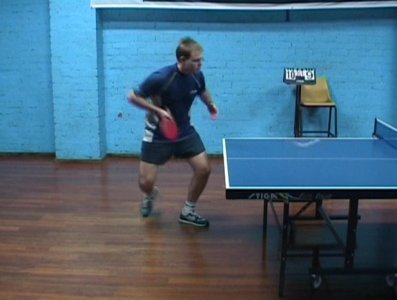
© Greg Letts
The ball has bounced on the table, and the player has finished his follow through.
Points to look for:
- Note the depth of the bounce of the ball on the table. This is typical of a double bounce serve (where the ball will bounce twice on the opponent’s side of the table if left untouched). It is very difficult to do a double bounce serve where the bounce on the server’s side is close to the endline.
The left foot has finished pivoting, the right foot has lifted and the right leg is now moving towards the camera.
Start Of Return To Ready Position
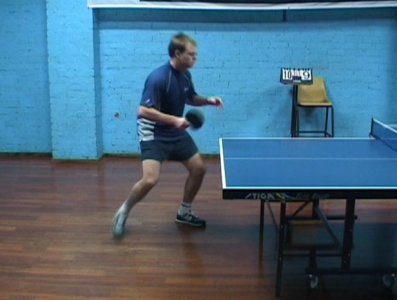
© Greg Letts
The player is starting to move into his ready position.
Points to look for:
- The ball can be seen just clearing the net.
- The right leg is moving into position, further away from the table than the left foot.
- The free arm is already in ready position.
- The player has a forward lean to aid balance and movement in all directions.
Middle Of Return To Ready Position
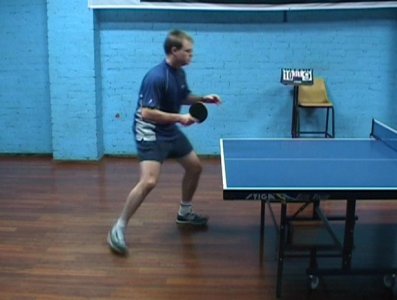
© Greg Letts
The player is continuing to move into his ready position.
Points to look for:
- The right leg is nearly in position.
- The playing arm and bat are nearly in position now.
Return To Ready Position
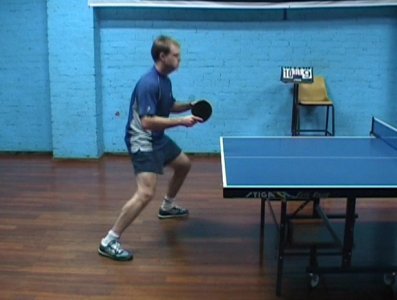
© Greg Letts
The player is now in his ready position for the next stroke.
Points to look for:
- The right leg has now moved into position, and the bodyweight has been put equally on both legs.
- The bat has been lifted into its ready position.
- The left foot has been moved backwards a little to stop the player’s feet from being too angled sideways in relation to the ball.
- The legs are well spread and the knees are slightly bent, with a little forward lean. The player is well placed to move in any direction that is required.

